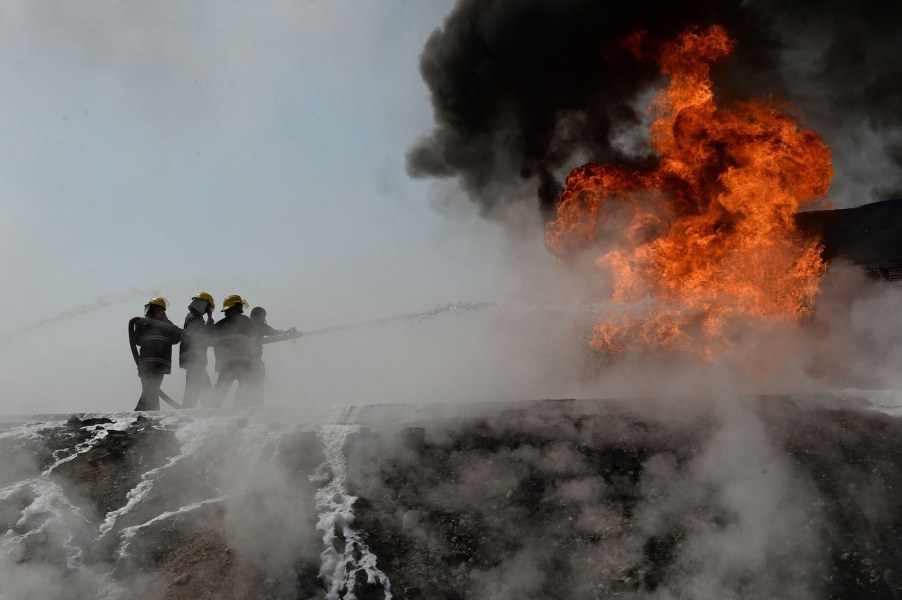
Here’s why a burning Tesla semi truck took 50,000 gallons of water, and airplanes, to extinguish
Imagine you’re cruising along a mountain highway in the Sierra Nevadas, and a Tesla Semi truck barrels past. Now picture this: same EV truck slamming into a tree, igniting into an inferno that takes 50,000 gallons of water to extinguish. According to a new NTSB report, that’s exactly what happened on Interstate 80 last month. The report dives deep into the incident, revealing that Tesla’s vaunted driver-assistance systems were “not operational” at the time. With many claiming the future of trucking is electric, this crash leaves questions—and hazards—burning in its wake.
Firefighters from CAL Fire had their hands full from the moment they arrived. Unlike a gasoline fire, this wasn’t a case of putting out flames and calling it a day. The good news is that lithium-ion batteries don’t ignite as quickly as a tank of gas. But the bad news is that these fires are notoriously difficult to extinguish. What made this fire so different wasn’t just its heat, but its persistence. EV batteries have a nasty habit of reigniting, and that’s exactly what happened here.
The blaze took 15 hours to control, shutting down a critical stretch of the highway. With the Tesla’s batteries involved, firefighters had to monitor the vehicle for 24 hours to ensure it didn’t flare up again. The response was so severe that aircraft were called in to drop flame retardant on the surrounding area—an unusual measure for truck fires.
In the aftermath, the NTSB opened an investigation into the incident. Its September 13th report confirmed that Tesla’s advanced driver-assistance systems (ADAS) were “not operational” at the time of the crash. Without these systems in play, we’re left wondering what caused the truck to veer off the road. As the NTSB digs deeper, what’s already been uncovered is alarming enough: battery fires, like this one, are becoming more common as electric vehicles take over the roadways.
To give you an idea, that 50,000 gallons of water is about the size of a small public pool. It took almost 17 times the water used for a typical house fire to extinguish one electric truck blaze. The NTSB stated in its report that “lithium-ion batteries contain the necessary fuel and oxidizer”, meaning they carry their own ingredients for reignition. This makes them extremely tough to handle. Combine that with Tesla’s deafening silence on the matter, and you start to see the bigger issue. For a company that’s marketed these trucks as the future of freight transport, their absence from the conversation is more than troubling.
As the NTSB continues its investigation, one thing is clear: the risk of battery fires isn’t going away. Electric vehicles bring a new type of hazard to our highways. The Tesla Semi fire shows just what it takes to handle these infernos. And while Tesla has remained silent, the rest of us should be asking: What’s next? If this is the future of EV trucking, it’s time to look hard at how best to keep our roads safe.



